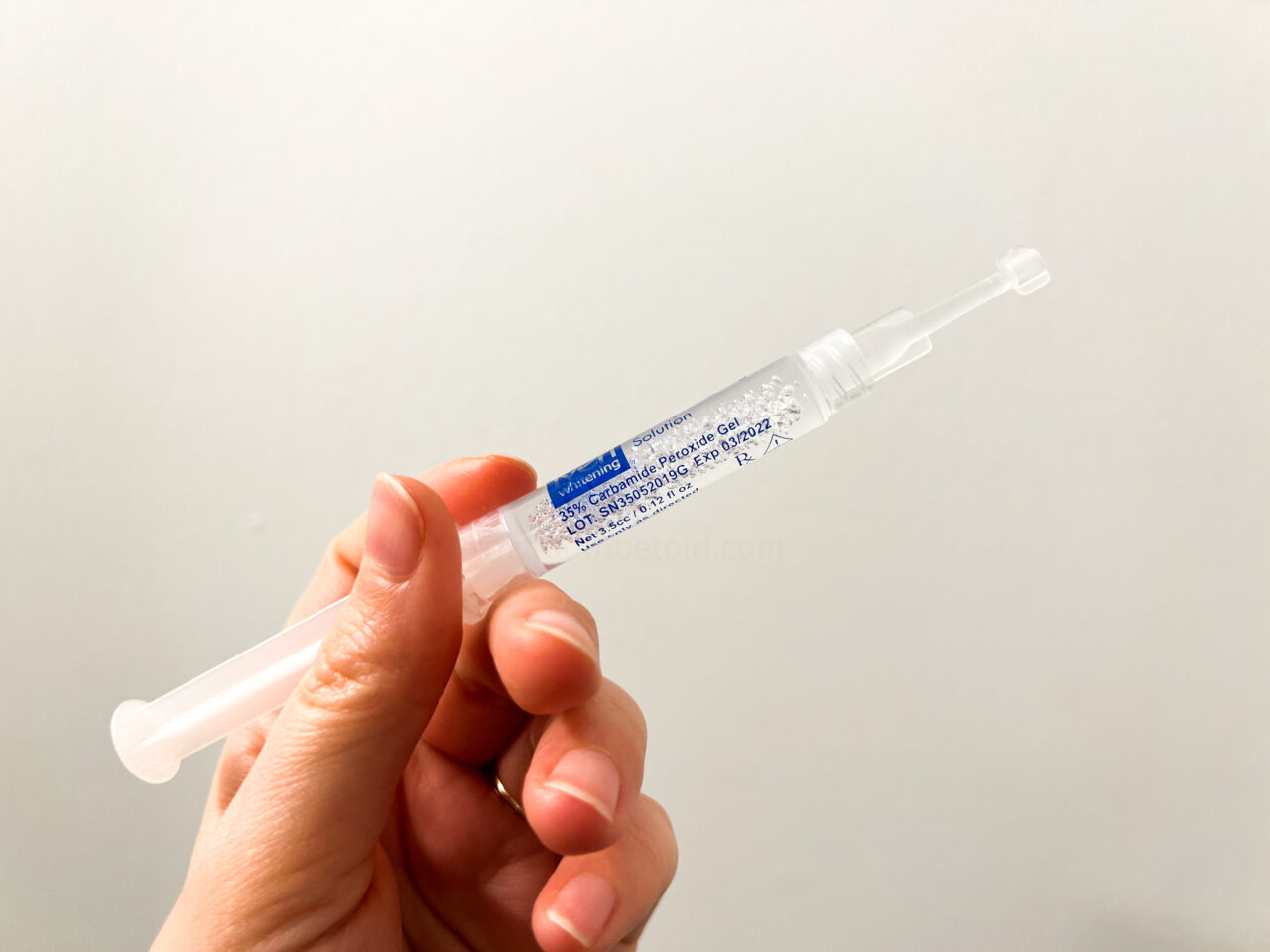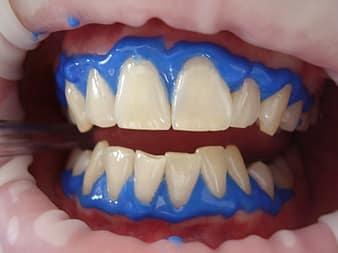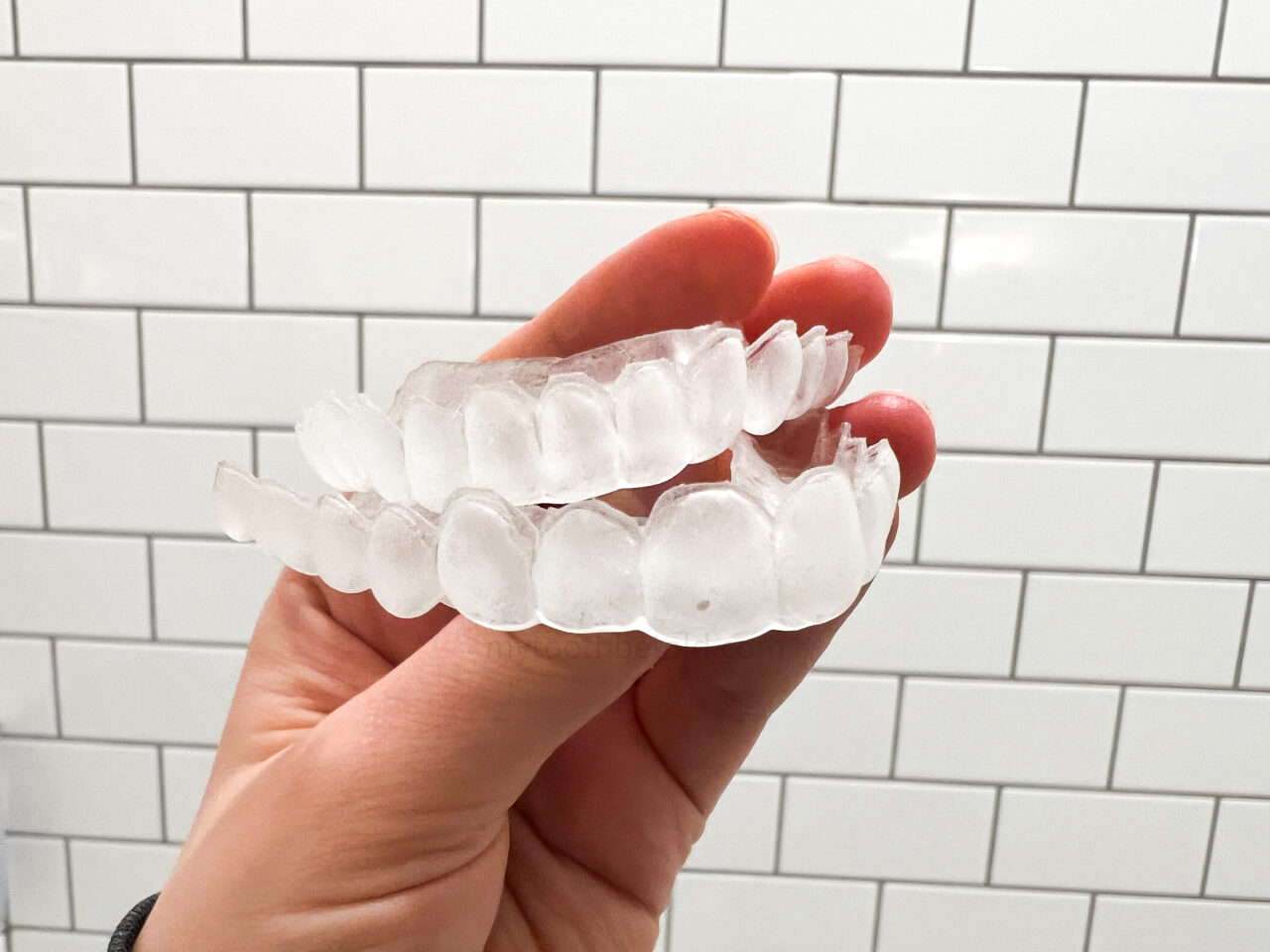
As a dental hygienist, one of the most popular topics I talk with my patients about is teeth whitening. People always seek dental professionals’ advice regarding brightening their smile, but sometimes whitening can cause unintended side effects such as burned gums.
Have a dental professional perform teeth whitening to prevent burns and protect gums during teeth. Custom whitening trays can help minimize product contact with gums. Follow product instructions, and don’t overfill trays. Put a thin layer of petroleum jelly on the gums to reduce exposure.
In this post, I cover how to prevent gum burn from teeth whitening, but if you have already burned them, I provide you with what to do, how long your gums will stay after burning them, and if the gel can damage your gums permanently.
How to prevent gum burn from teeth whitening
Keep in mind the seven different ways to prevent gum burn when you are thinking about whitening your teeth. Choosing a specific treatment and paying particular attention to teeth whitening can make all the difference in preventing the burning of your gums while whitening.
1. Have teeth whitening done by a dental professional
The best way to prevent gum burn is to have a dental professional perform the teeth whitening procedure. We (dental professionals) will put a protective barrier on the gums to prevent the whitening solution from leaking onto the gums. You can see an example of this barrier in the photo below.

In-office teeth whitening treatment is much more controlled, and we take the time to protect your gum tissue which cannot be done at home.
Read Now: Can You Do Zoom Whitening at Home? Dental Hygienist Explains
I always recommend consulting with your dental professional in person to discuss your individual needs and risks and get their guidance on how to minimize your risk of burning your gums and discuss the best treatments for your individual needs!
2. Use custom teeth whitening trays made by dental professional
Your teeth are as unique to you as your fingerprint. Generic whitening strips will not work as well as custom-made trays that fit your teeth perfectly. All the grooves and different tooth positions will be perfectly covered with custom-made whitening trays.
The picture below is of my custom-made teeth whitening trays I made myself at my dental office. They are perfectly formed to my teeth, allowing me to reach all the surface area I want to whiten.
The gumline is scalloped, so if I accidentally overfill the trays with the whitening gel, I can easily wipe away the excess so it does not burn my gums.

3. Clean and dry teeth and gums before applying the whitening product
If you are whitening at home, clean (floss and brush without toothpaste) and dry the teeth and gums before applying the strips to the teeth.
Drying prevents the moisture in your mouth from mixing with the solution and causing it to run/spread, which can increase the contact between the whitening product and the gum tissue.
Read Now: Teeth Whitening Strips: How They Work and How to Use Them
4. Use Petroleum jelly to prevent gum burn
Put a thin layer of petroleum jelly along the gums, but remove any that gets onto the teeth. Because petroleum jelly is oil-based, it will repel saliva and the whitening product, helping to prevent gum burn.
Vaseline® Jelly meets FDA requirements for being safe for human consumption.
Source
5. Do not overfill whitening trays
Overfilling whitening trays is the most significant cause of burning gums. All you need is about a grain of rice-sized gel for each tooth.
I would say a small grain of rice, not a long grain!
Remember to only put the gel on the front surface of the trays. You do not need to whiten the back sides of the teeth where no one will see.
6. After inserting whitening trays onto the teeth, gently wipe away excess gel
After inserting the trays into the mouth, ensure none of the gel has been pushed out of the tray to come into contact with the gums.
I take my finger and gently wipe it away and rinse my finger off. I like using my finger because I have more control and feel the gums to ensure I’ve gotten all of the whitening product off.
7. Only use the product for the recommended time
Using the product over the recommended time, the difference it will make is minimal. The longer you wear the product, the more chance to burn your gums.
Read Now: Whitening Sensitive Teeth; Hygienist Explains Best Products
In the following video, I use HiSmiles PAP+ teeth whitening strips, and I take you on the journey!
What to do if you burn your gums during teeth whitening
I have had patients come in to see me because they have burned their gums while whitening their teeth and are concerned.
If gums are burned during teeth whitening, immediately remove the whitening product and rinse out with warm water to remove the whitening product. Rinse with warm salt water to promote healing. After, rub vitamin E oil onto the burned gums to promote healing and take pain medication for discomfort.
You can buy vitamin E capsules that you can break open with a pin and squeeze out enough oil to use on your gums.
How long do gums stay white after teeth whitening?
Gum tissue that has been burned and irritated and has turned white from teeth whitening can stay white for 2-24 hours. Gum tissue should return to red/pink after at least one day, with the gum tissue returning to normal 48-72 hours after.
If you are worried that the tissue is not healing and is irritated, it may be a good idea to check with your dentist, as there could be something else.
Can teeth whitening gel damage your gums?
Teeth whitening gel should not damage the gum tissue long-term. Minor irritation can occur, but the gums should be healthy within 2-24 hours. However, in patients with active gingivitis or periodontitis, the gel can cause a larger reaction causing more pain, swelling, redness and discomfort.
It is best to delay teeth whitening if there is active gum disease (gingivitis and periodontitis) in the mouth.
If you are concerned about your gum tissue, I always recommend seeing your dental professional for a full assessment!
I hope you have a great day,
Holly 🙂

